Year 9 Types of Number Worksheets
Finding HCF and LCM - Including the Use of Venn Diagrams
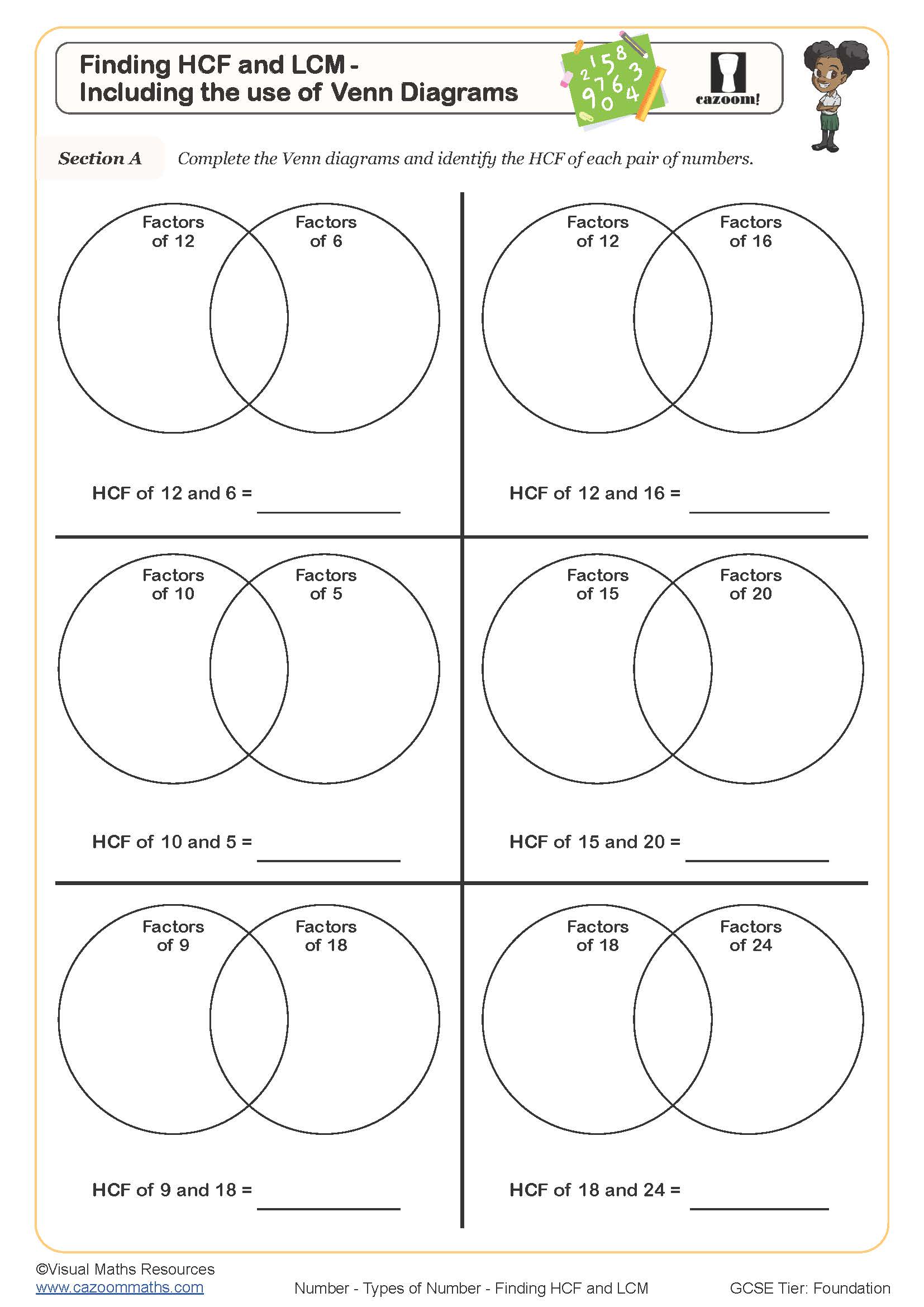
Given HCF & LCM - Find Possible Numbers
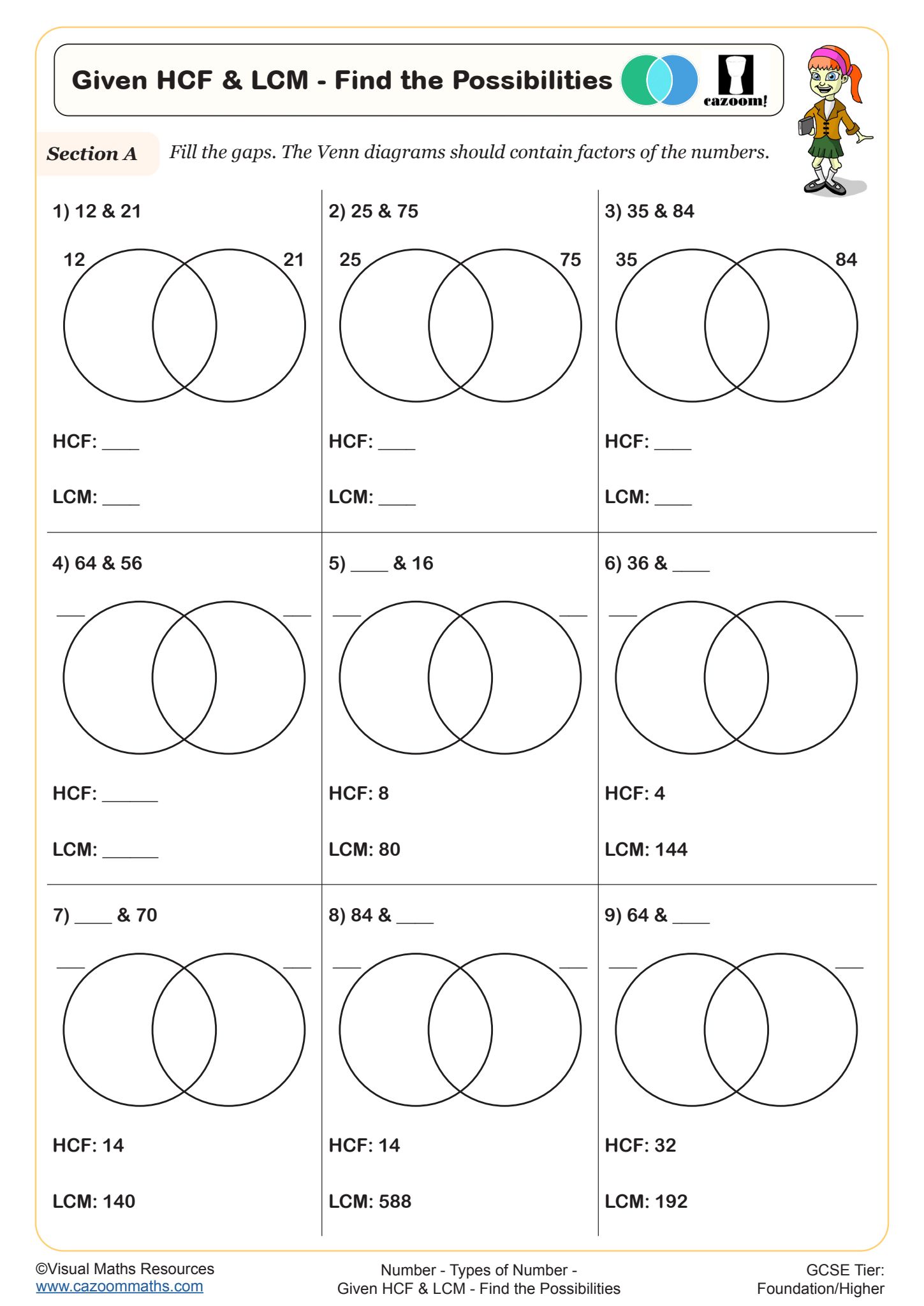
Highest Common Factor
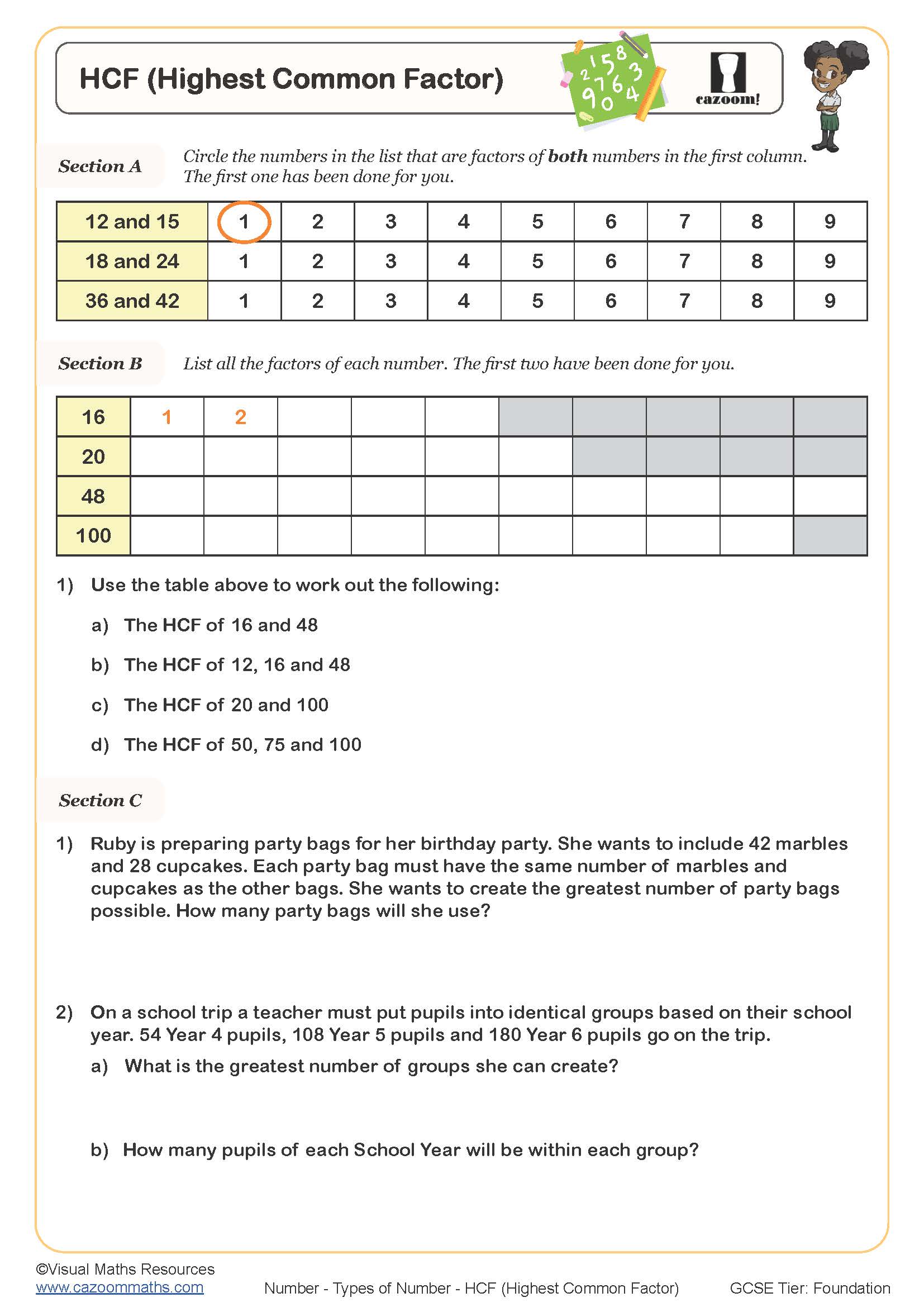
Lowest Common Multiple
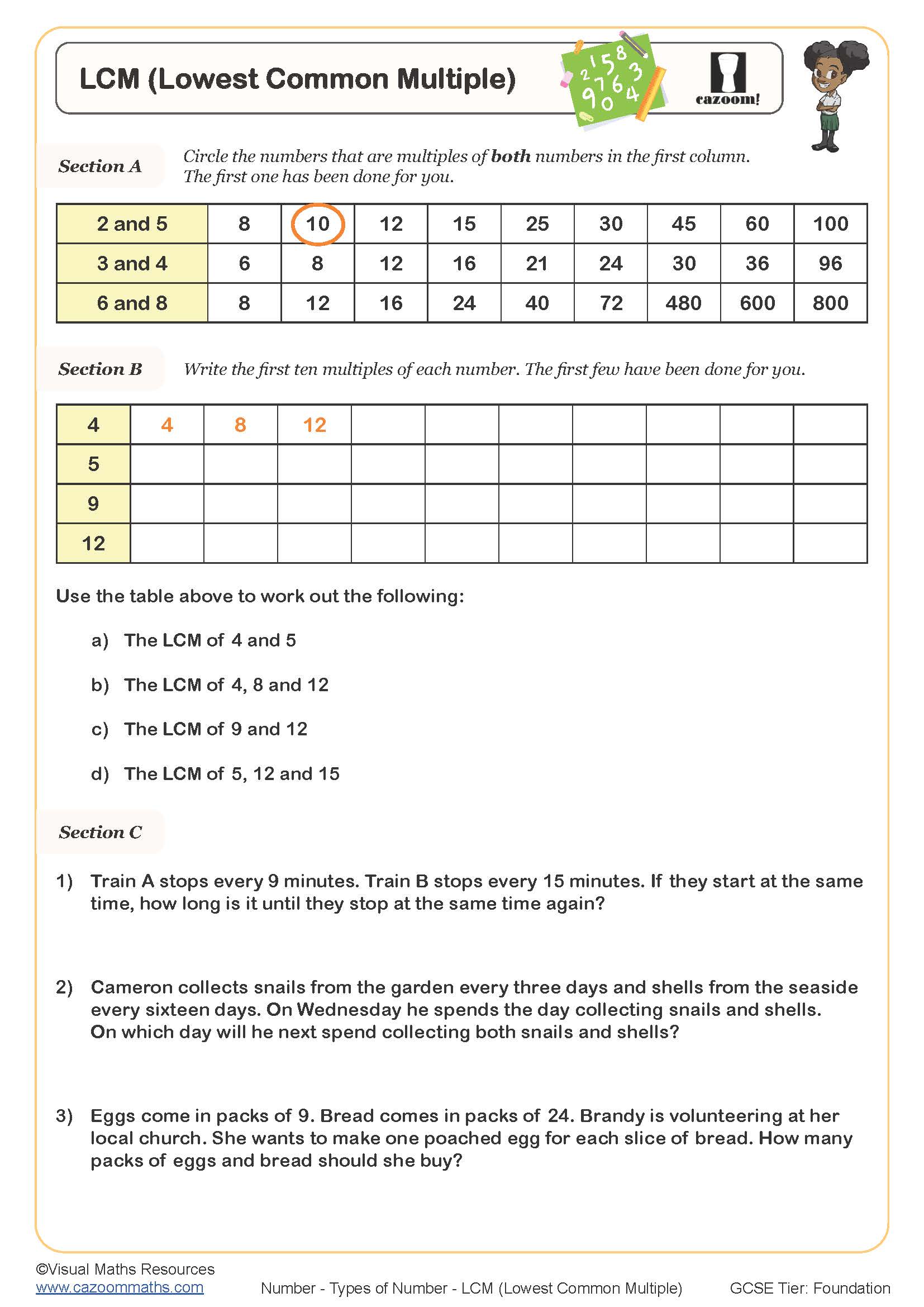
Prime Factor Decomposition - Using the Short Division Method
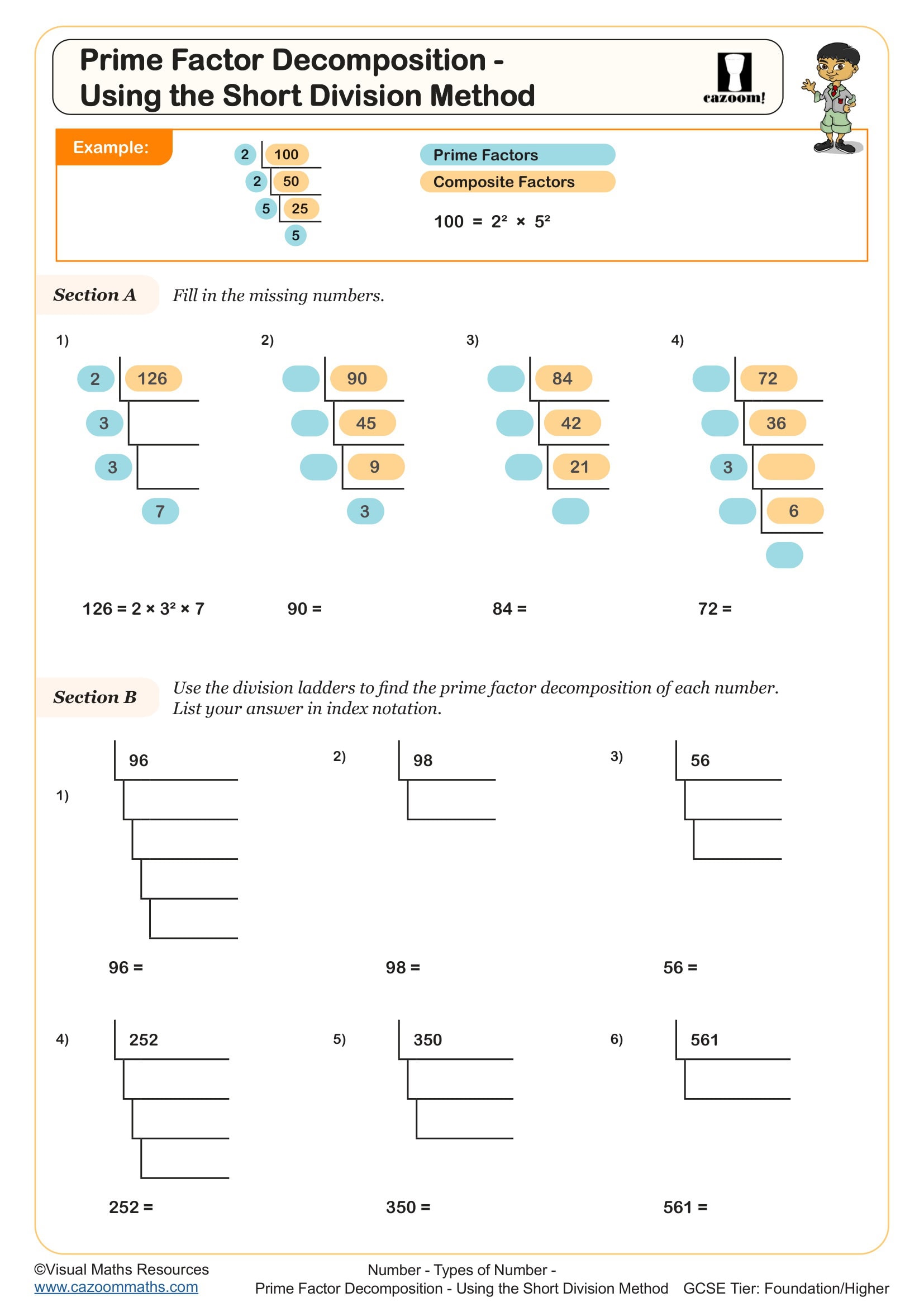
Prime Factor Decomposition Using Factor Trees
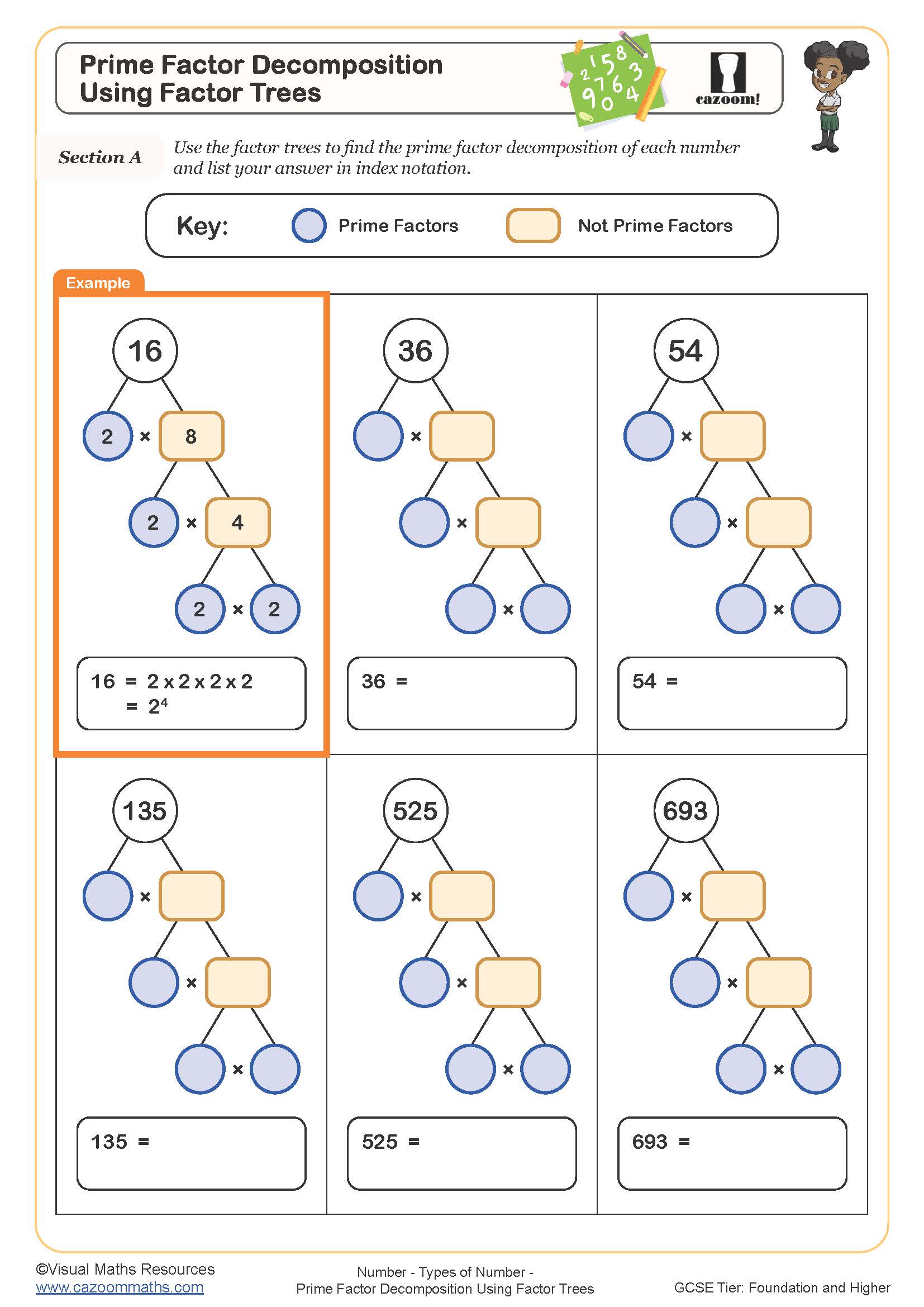
Using Prime Decomposition to Find HCF and LCM (A)
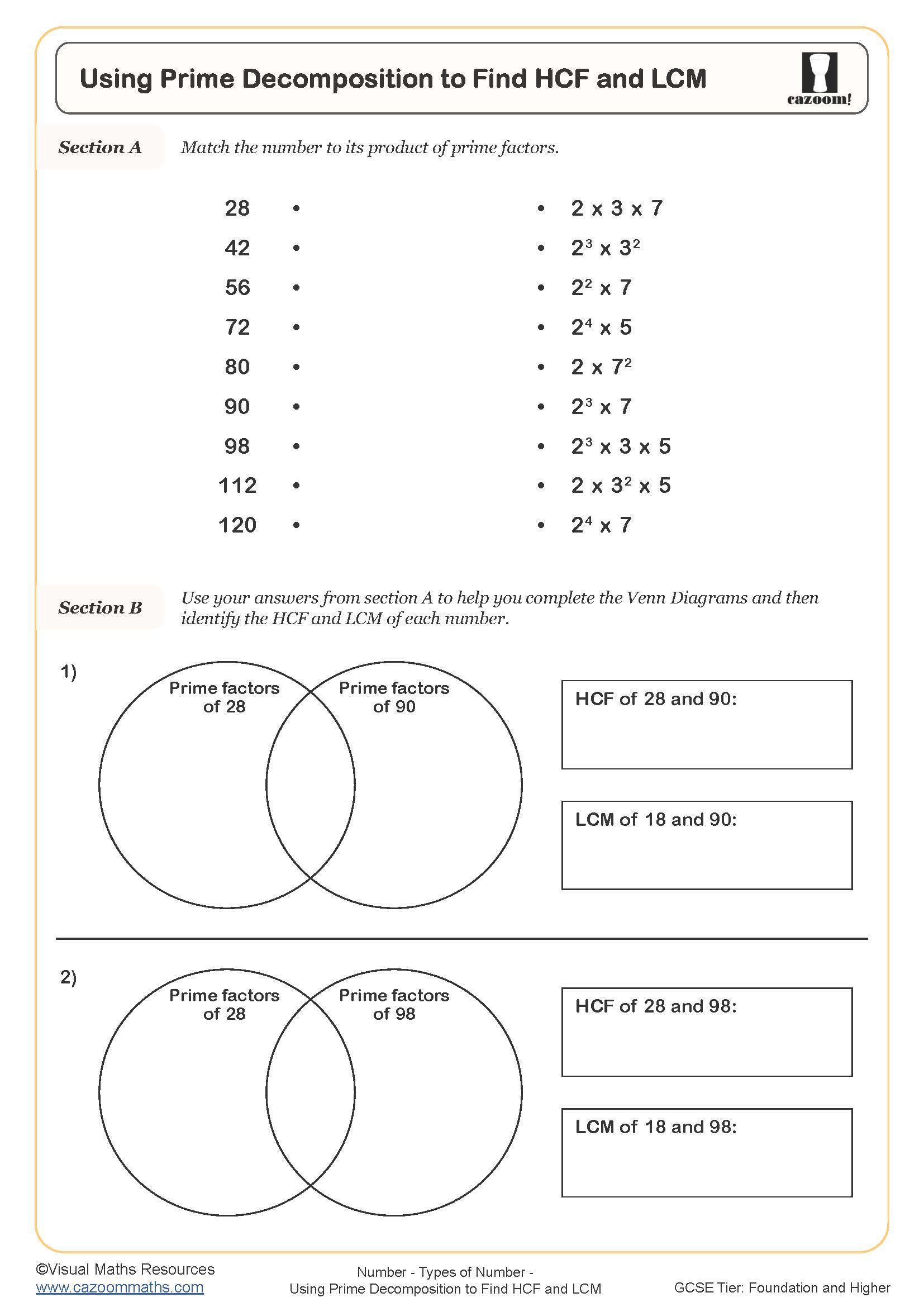
Using Prime Decomposition to Find HCF and LCM (B)
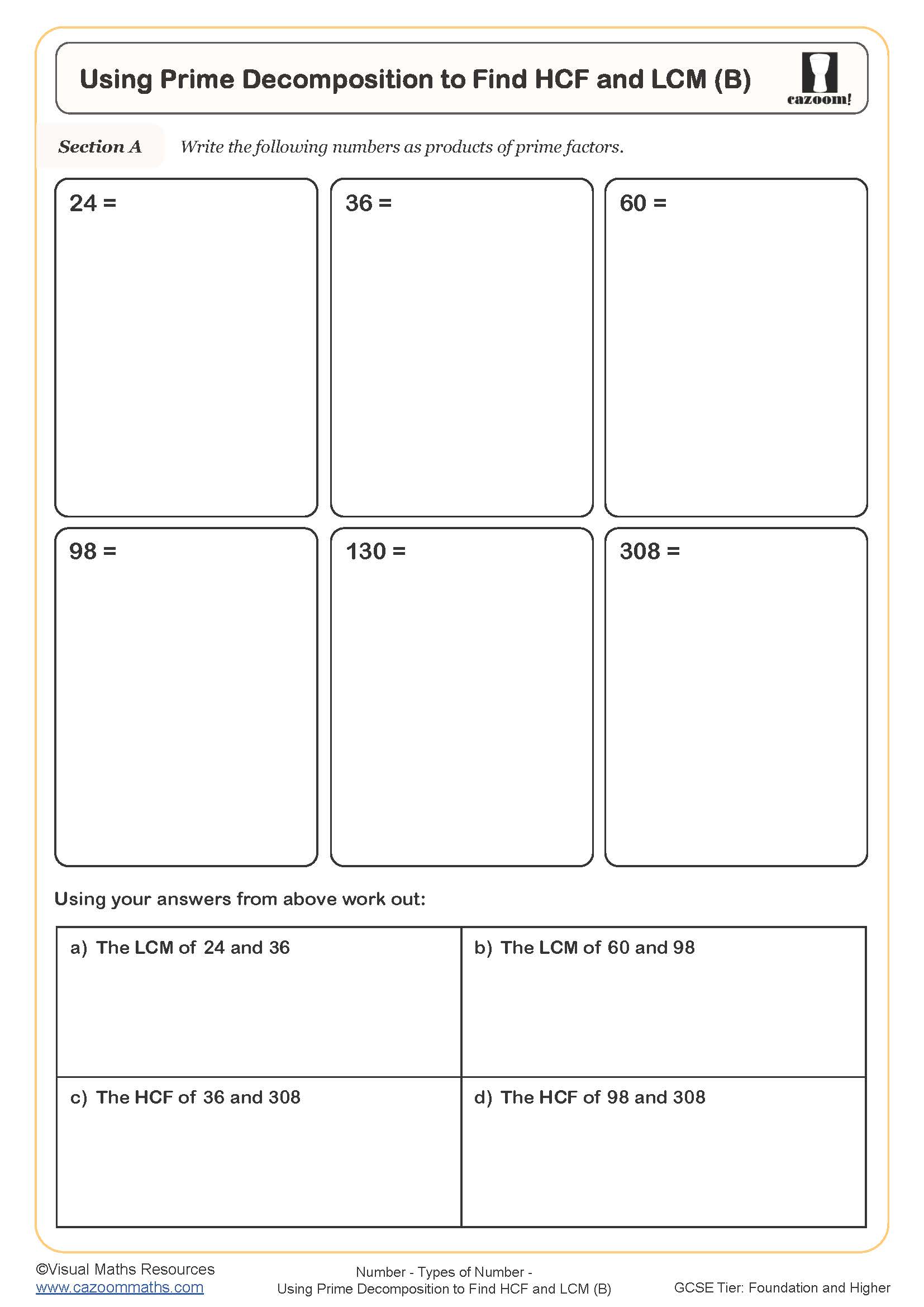
Using Prime Factor Decomposition
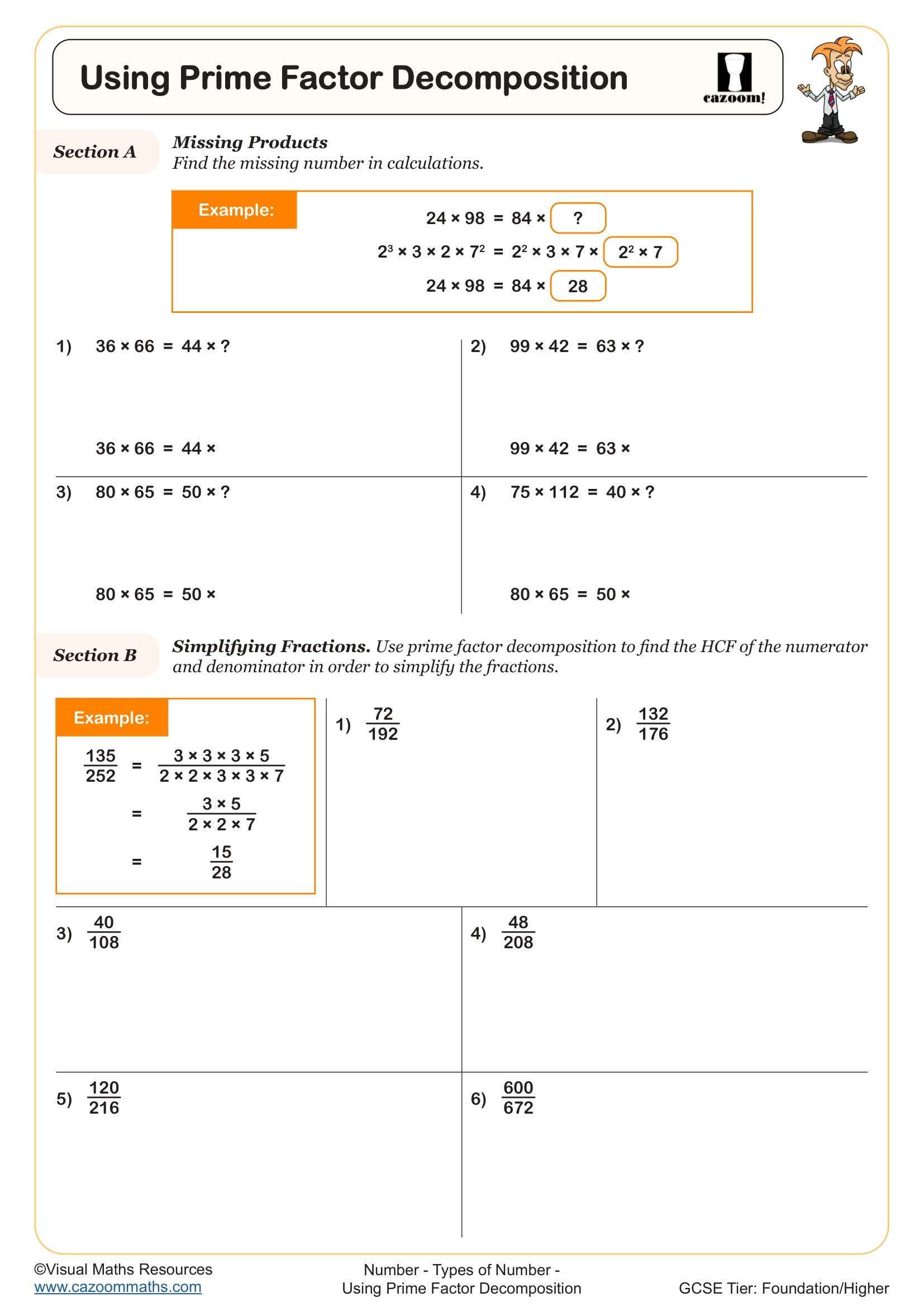
Using Prime Factors to Identify Square, Cube Numbers and Roots
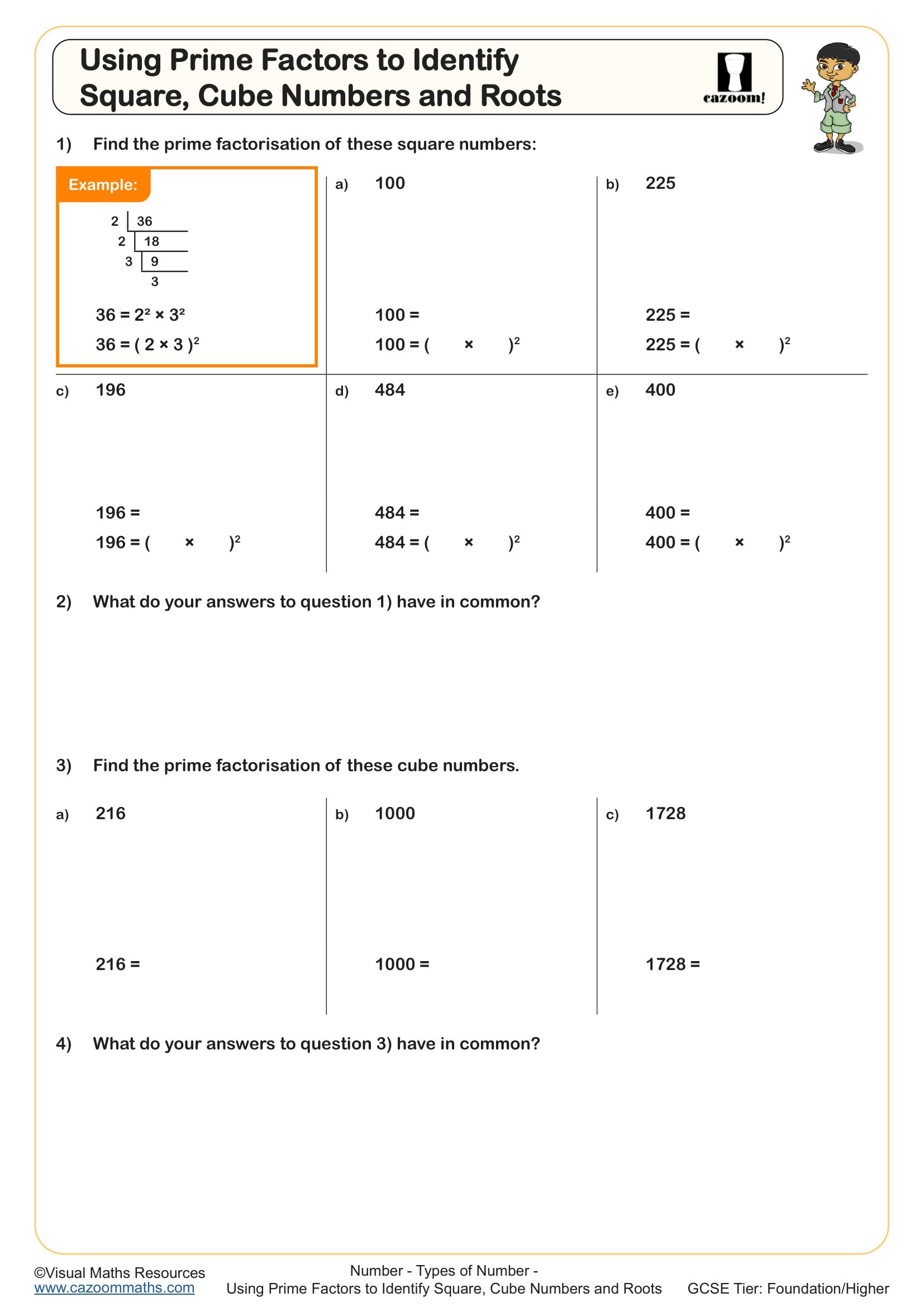
Discover the Key to Confident Learners Through Our Printable KS3 Number Resources
Understanding different number types fundamentally changes how students approach mathematical problems throughout secondary school. Year 9 students need to understand numerical properties at an abstract level through the complex classification systems they learn. Learning to recognise patterns in prime factorisation enables students to create efficient methods for simplifying fractions and finding common denominators. The advanced knowledge of number relationships allows students to link different subjects, which makes algebra more natural when variables are substituted for known numbers. The practice of solving different types of problems helps people build mental flexibility, which they need to solve new and unexpected questions. Systematic methods to study factors, multiples and roots enable students to solve polynomial factorisation problems and quadratic equations effectively.
Specific learning benefits include:
• Mastery of prime factorisation techniques
• Recognition of rational versus irrational numbers
• Fluency with standard form calculations
• Understanding connections between factors and multiples
• Development of systematic problem-solving approaches
• Preparation for advanced algebraic manipulation
• Strong foundations for polynomial work
Maths Skills You’ll Cover Using Cazoom Maths Year 9 Types of Number Worksheets
The worksheets begin with basic numerical problems, followed by pictures and end with abstract number property exercises. The sequence follows a structured approach to curriculum design, which begins with basic content before moving to surds and then advanced index concepts. The resources provide complete worked solutions which show different methods to solve problems. The use of visual aids creates an advantage for students who learn through pictures, yet presents difficulties for students who excel in math.
The worksheets in this collection include:
• Prime Numbers and Prime Factorisation — identifying primes and expressing numbers as products of prime factors
• Factors and Multiples — finding all factors systematically and recognising common multiples
• HCF and LCM — calculating the highest common factors and the lowest common multiples using various methods
• Square Numbers and Cube Numbers — recognising perfect squares and cubes within calculations
• Powers and Roots — evaluating expressions involving indices and understanding root notation
• Standard Form — converting between ordinary numbers and scientific notation confidently
• Rational and Irrational Numbers — classifying numbers and understanding decimal representations
• Introduction to Surds — simplifying radical expressions and performing basic surd operations
Accuracy Holding Back Your Grades? Year 9 Types of Number Activities Are the Cure
Teachers praise the teaching materials because they deliver appropriate learning challenges which work for students at various ability levels in classrooms with diverse student needs. The worksheets maintain a structured format which enables natural differentiation between students without requiring different materials for each group. Quick starter activities activate prior knowledge before main exercises, and develop new concepts systematically. The extension problems function to test advanced students, but consolidation questions provide additional practice for students who need it. Teachers can quickly spot student misunderstandings because completely working on answer sheets enables fast grading. The basic presentation style enables students to concentrate on math content because they do not need to allocate mental resources to reading instructions. Teachers utilise regular formative assessment opportunities to monitor student development and make necessary adjustments to their instruction.
From Finance to Music: Practical Applications of Number Classification in Everyday Situations
Mathematical number types appear throughout daily life, from scientific measurements to financial calculations. Understanding these classifications helps students interpret real-world data meaningfully. For example-
• Scientific research uses standard form for astronomical distances and microscopic measurements.
• Computer programming relies on understanding binary numbers and different number systems.
• Engineering calculations require precise work with irrational numbers like pi.
• Financial modelling uses compound interest formulae involving powers.
• Cryptography depends on properties of prime numbers for secure communications.
• Architecture employs the golden ratio and other irrational proportions.
• Music theory connects frequency ratios to harmonic relationships.
• Sports analytics uses statistical models requiring various number types.